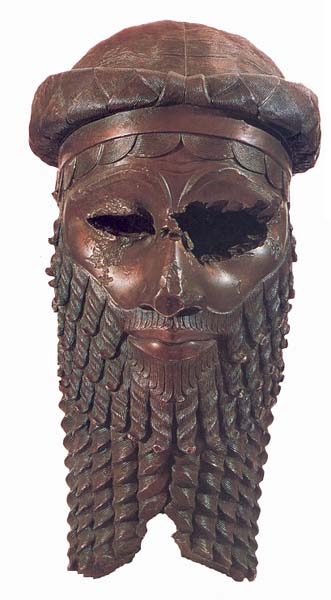
With its left eye gouged out by marauders in antiquity, this copper head has provoked a stream of speculation. Discovered in 1931 near the temple of Ishtar at Nineveh, the head is believed to represent the third-millennium B.C. king Sargon, founder of the Akkadian empire, or his grandson.
Why was the head mutilated but not destroyed completely? Was it simple avarice that led to the removal of precious stones from the eyes? Or was the motive more sinister?
A victim of iconoclasm, the head was apparently defaced almost 2,000 years after it was created, during the destruction of Nineveh, the last great Assyrian capital, by the Medes and Babylonians in 612 B.C.
For many, Sargon was synonymous with foe: Famed in antiquity as the prototypical warrior-king, Sargon of Akkad united Babylon under one rule during the third millennium B.C. More than a thousand years later, the kings of Assyria, claiming descent from Sargon, would adopt his name. The Assyrians presumably displayed this head at Nineveh in honor of their eponymous “ancestor”; the Medes and Babylonians would have desecrated it in order to dishonor him and his successors.
In ancient times the harm inflicted to statuary often mirrored real-life punishments. And yet the particular mutilation seen here—the bridge and point of the nose, one eye (the other may have simply lost its inlay), both ears and the tip of the beard have been damaged—is not mentioned in ancient Assyrian and Babylonian records.
Already a library member? Log in here.
Institution user? Log in with your IP address.

